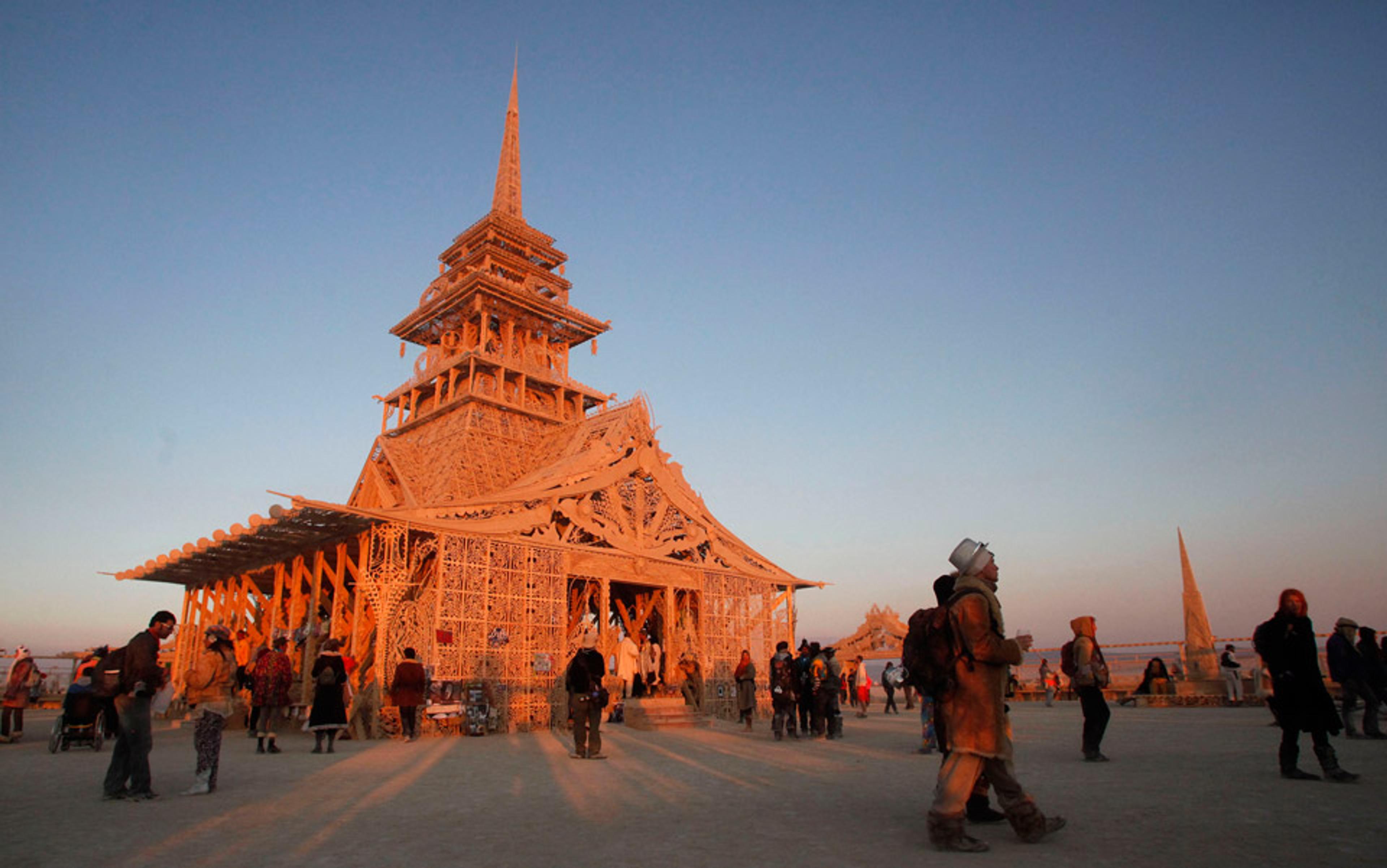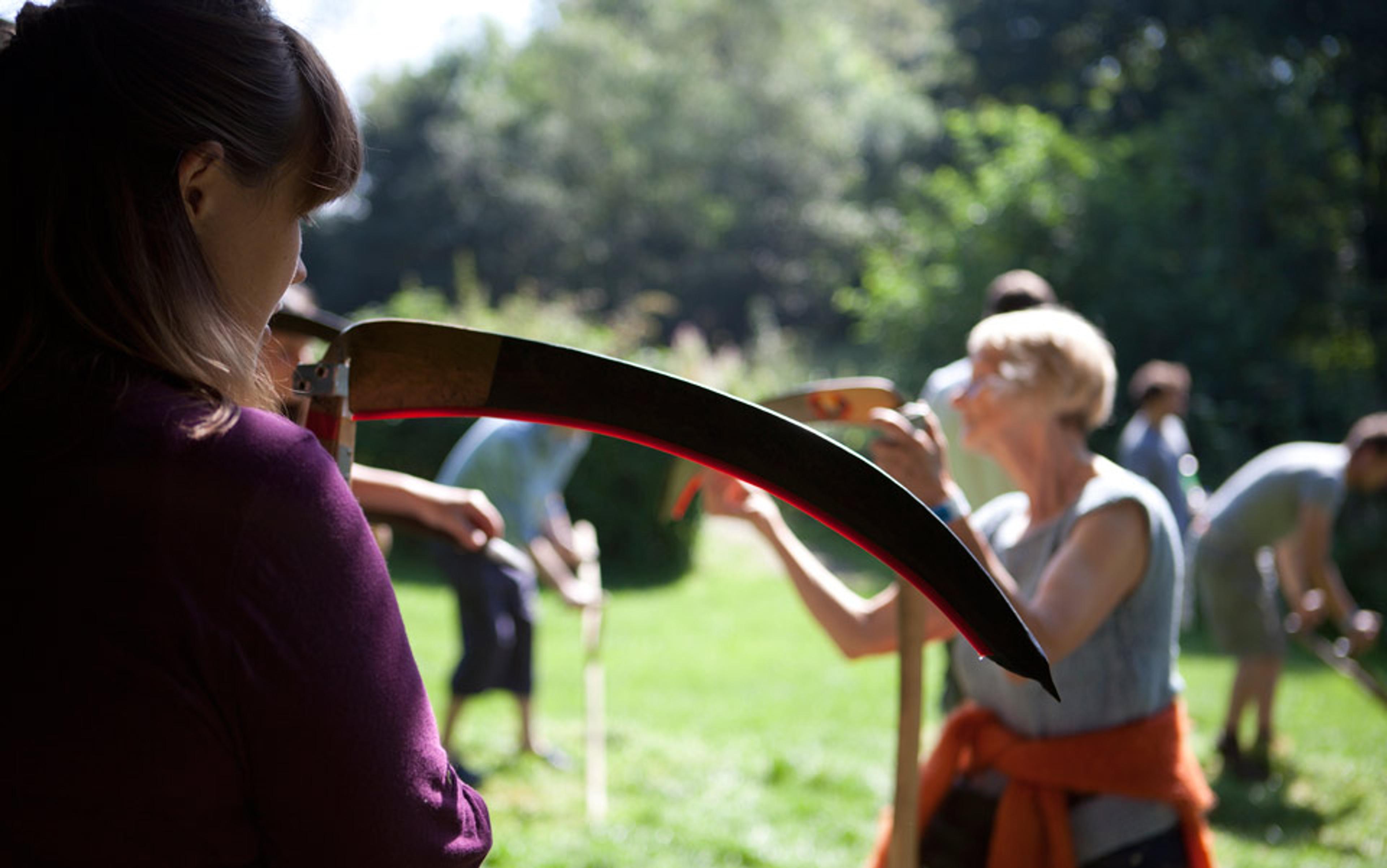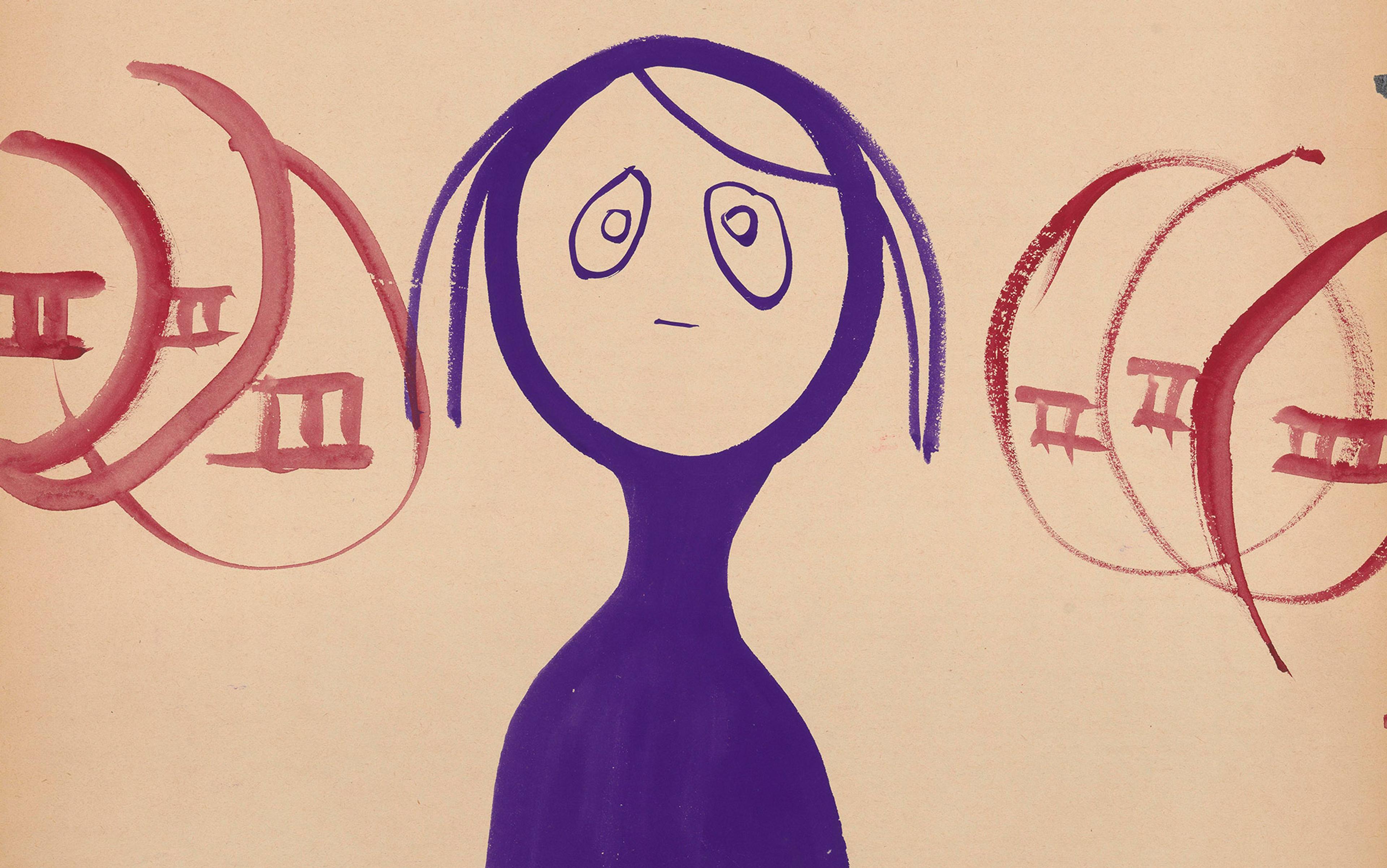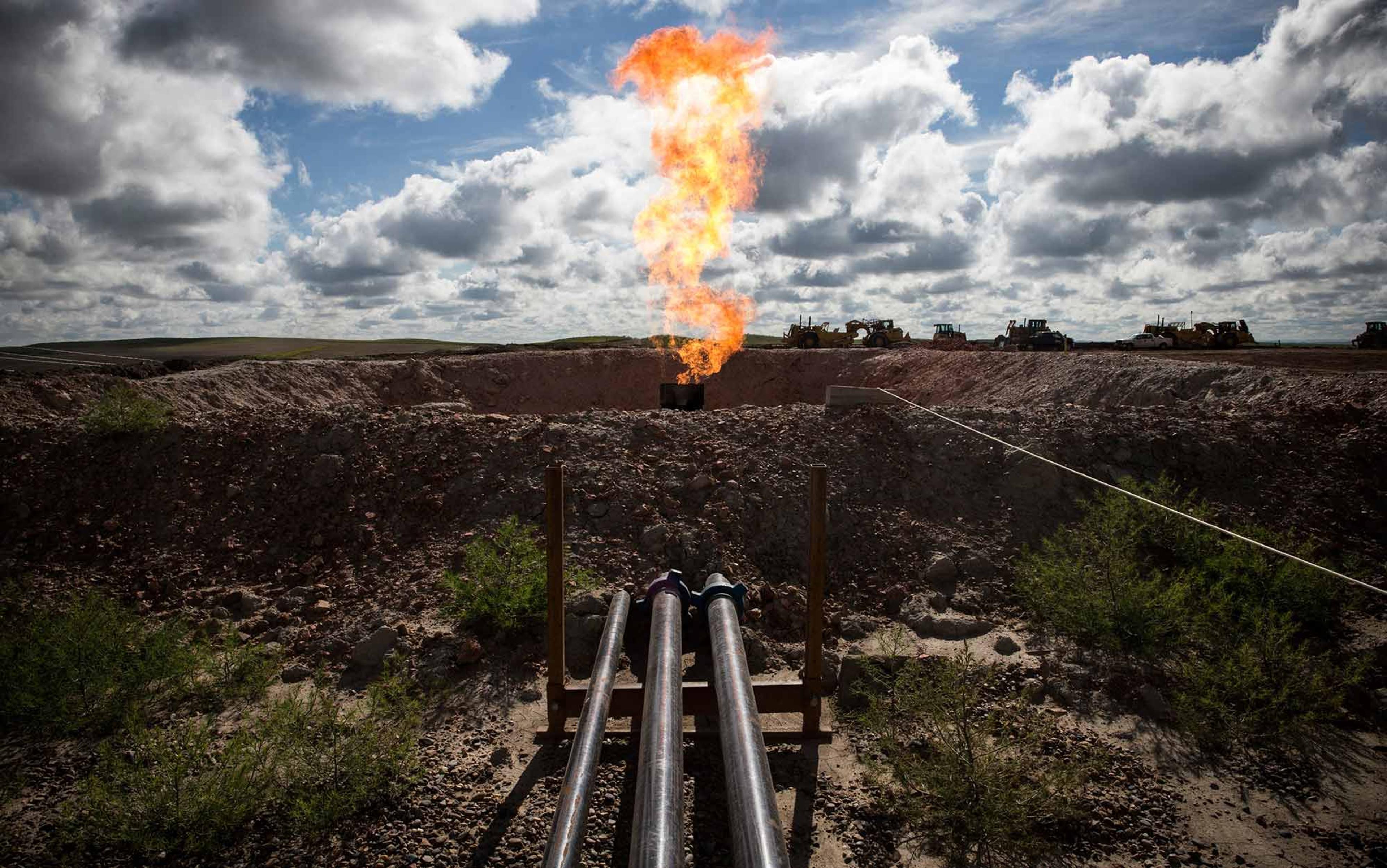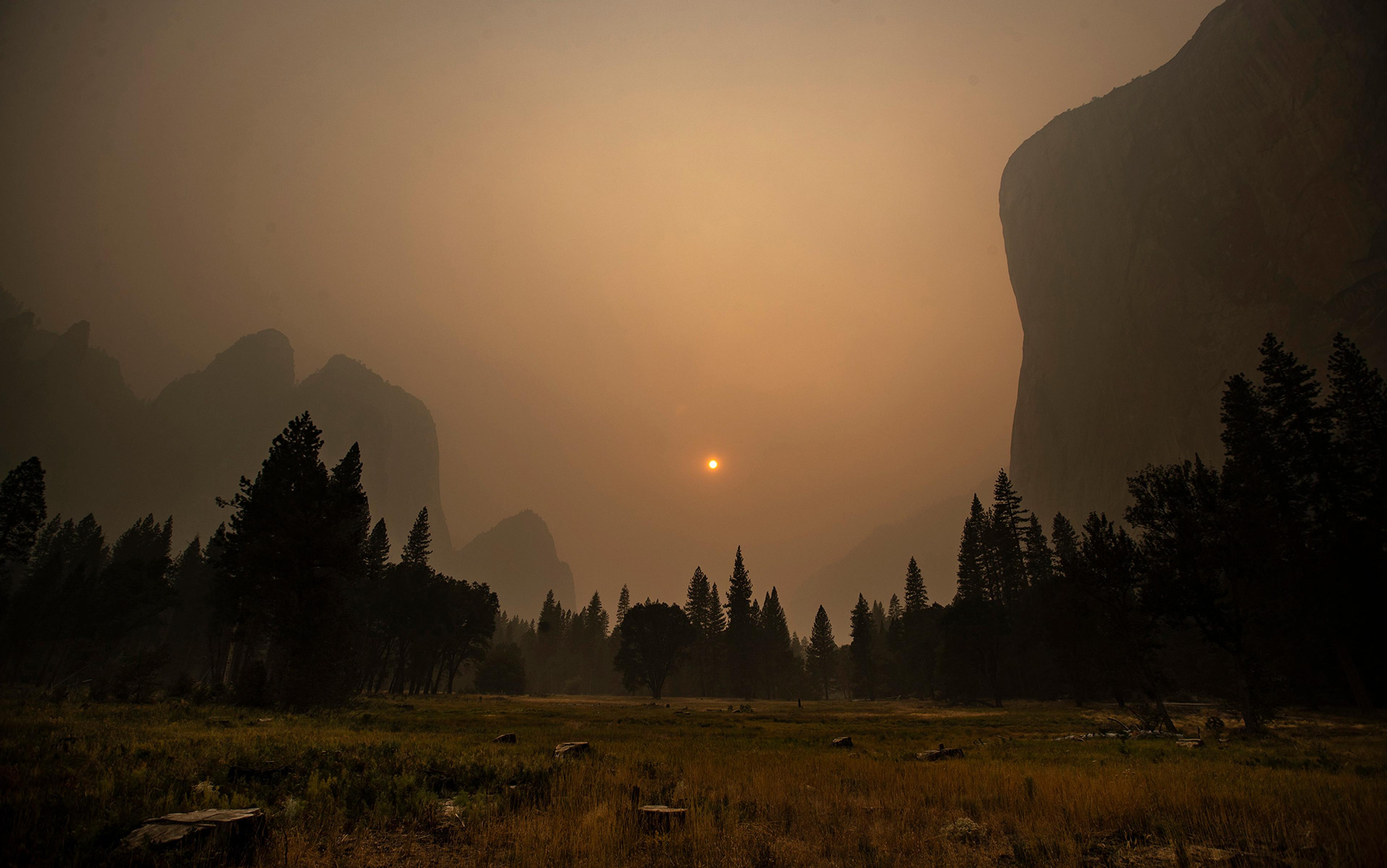Pushing beyond exhaustion, I’m enveloped by a fog of white dust unsettled from the flat expanse beneath my pedals. My head is wrapped in goggles and bandana – the mask de rigueur in this carnival at the edge of the known. Hitched on opposite sides of my utility belt are items of equal weight, albeit disparate utility: an aluminium corkwood water bottle and a pink toy vacuum cleaner. Suddenly, through the thick curtain of this reverie appears another rider, likewise begoggled, and blanketed in fine alkaline particulates. Encountering another self, we share an unspoken revelation: ‘…and to dust we shall return.’
A cumulus of such encounters – some pragmatic, others absurd – reveal our coordinates: the Black Rock Desert, 120 miles from Reno, Nevada. More decisively, we are in this desert’s 200-square-mile salt pan, or playa (Spanish for beach). Intimacy with this extraordinary space enhances the perception of boundary dissolution, the blurring of outlines, a sensation mediated by the powdery surface dust animated, even under a gentle breeze, into a pervading white noise. This tangible fuzziness is familiar to denizens of Black Rock City, the annual gathering known as Burning Man. On my virgin encounter with the crescent-shaped city in 2003, the playa showed clear signs of habitation. It had been occupied for weeks by dust-encrusted volunteers manifesting a city amid white-outs and withering heat; it also exhibited the labours of dedicated stalwarts assembling an ‘ephemeropolis’, co-creating epic works of art, and most often reducing them to ash, year in and out. The Black Rock playa, I discovered, had been hallowed by a significant populace calling the place ‘home’.
But ‘home’ is complicated here since Burning Man resists simple classification. A week-long fire-arts gathering. A temporary city that, in 2018, had a total population of nearly 80,000. A non-profit organisation. The Burning Man Project oversees a cultural movement with a network of more than 85 regional events in 35-plus countries. It is a land steward that, in 2016, purchased the 3,800-acre Fly Ranch, Nevada. Perhaps foremost, Burning Man is a place that is no place at all. The ephemeral and otherworldly qualities of this dust-filled desolation bear heavily on the status Burning Man has earned as a benchmark in ‘transformational’ events
The sublime quality of the playa is integral to the story of Burning Man. Home to a seasonal fire ceremony culminating with the incineration of a towering effigy called ‘the Man’, Burning Man is a frontier settlement imagined as a tabula rasa, Petri dish, blank canvas. These ideas reveal a founding paradox: abundance and possibility are propagated in one of the driest open expanses in North America.
The paradox was unpacked by Larry Harvey, Burning Man’s primary founder, during a lecture in Minneapolis in 2000. He asked the audience to imagine ‘a place that is no place at all apart from what we choose to make of it’. It was Harvey, the landscape gardener and one-time taxi driver, who had, with his carpenter buddy Jerry James and friends, lugged an eight-foot wooden statue onto San Francisco’s Baker Beach, summer solstice, 1986. They weren’t the first to draw a crowd to a flaming object on that beach. Nor was Harvey the first to torch an anthropomorphic figure as a means to catharsis. He didn’t start the fire, but in the three decades before he died on 28 April 2018 following a stroke, Harvey sure kicked up some dust. The newly-built statue was razed annually at Baker Beach until 1990, when it was deemed a public safety hazard destined to be razed somewhere else.
That elsewhere, it turned out, was an absolute nowhere. Devoid of vegetation and wildlife, typically insect-free, the great expanse of the Black Rock Desert playa holds traces of an ancient inland sea. Covering much of present-day Nevada for about 2 million years, the Pleistocene epoch Lake Lahontan has long since vanished. Seasonal water returns as runoff from the Calico and Jackson mountain ranges, forming a shallow lake that normally evaporates by August, exposing an impossible plane of encrusted alkali dust, its surface sun-cracked in hexagonal patterns. Conditions are scorching by day (with highs soaring to 120°F, or nearly 49°C), and not-uncommonly freezing at night. Relocated from the edge of the Pacific Ocean to the farthest beach on the continent, past the hamlet of Gerlach, Nevada (where the sign reads ‘Where the pavement ends and the West begins’), Burning Man was promoted as ‘an opportunity to leave your old self and be reborn through the cleansing fires of the trackless, pure desert’. The line is from the promotion for the inaugural desert burn dubbed “Bad Day at Black Rock (Zone Trip #4)” by the surrealist inspired San Francisco Cacophony Society, who’d colluded with Harvey to burn the statue on the Black Rock playa over Labor Day weekend 1990.
In his photographic homage to Burning Man, Playa Fire: Spirit and Soul at Burning Man (2017), Stewart (brother of Larry) Harvey described his initial exposure to the space: ‘It looked like a place people go to vanish.’ The sentiment is understandable, given the distinct possibility of getting lost, becoming mired in instant clay, and caked in dry chalky particulates that ghost one’s being (and permeate equipment) out beyond the shoreline. Yet, the vanishing point turned out to be an epic threshold on the path to a new homeland. ‘The desert opened itself to us, and we succumbed to its sprawling embrace,’ wrote Stewart Harvey.
For artists drawn to the playa, the value of the alkaline flats lay not in salt, minerals or precious metals, nor in the testing of experimental weapons. From the first desert burn, this other Nevada Test Site (not the site of 928 nuclear tests 360 miles to the south) became an experimental site for mining the riches of the imagination. The playa would become a proving ground for large-scale art projects designed, built and burned by cohorts of volunteers. An inhospitable place, and yet a haven for monuments to impermanence, like the effigy that now towers up to 100 feet, or the 65-ft-high cluster of lighthouses that appeared to me in 2016 like an impossibility sprouting from a Dr Seuss pop-up book. The topography was an exacting teacher and harsh taskmaster, but its occupants expressed gratitude for a space possessing a ‘spirit’ that has permeated their lives, not unlike its fine alkali particulates.
Astonishing natural events such as vast waterfalls, the star-filled night sky and great deserts instill an ‘aesthetic-moral relationship’ with nature, explains the environmental ethicist Emily Brady, author of The Sublime in Modern Philosophy (2013). ‘We feel insignificant, humbled by the greatness of nature rather than masterful over it,’ she writes. The appreciation can feed into new forms of self-knowledge and potentially ground respect for nature’s scale and power. As pivotal to her case, Brady focuses on the mix of exhilaration and anxiety in the human response to nature — especially that perceived as infinite and limitless (the vast featureless desert is a case in point) or dynamic (as in a raging storm). For nature to be sublime, she says, it must be immediate and challenging, causing us to feel defeated and exalted at once. It is a mixed cocktail of experience, not unlike that on which seasoned Burners would grow intoxicated, the extreme conditions of the open playa routinely laying waste to the best of intentions and showing no quarter to even the hardiest of pilgrims. Over recurrent odysseys, playagoers have cultivated a relationship with a radically other space upon which one cannot make an impression without becoming vulnerable, dissolving ego, taking risks.
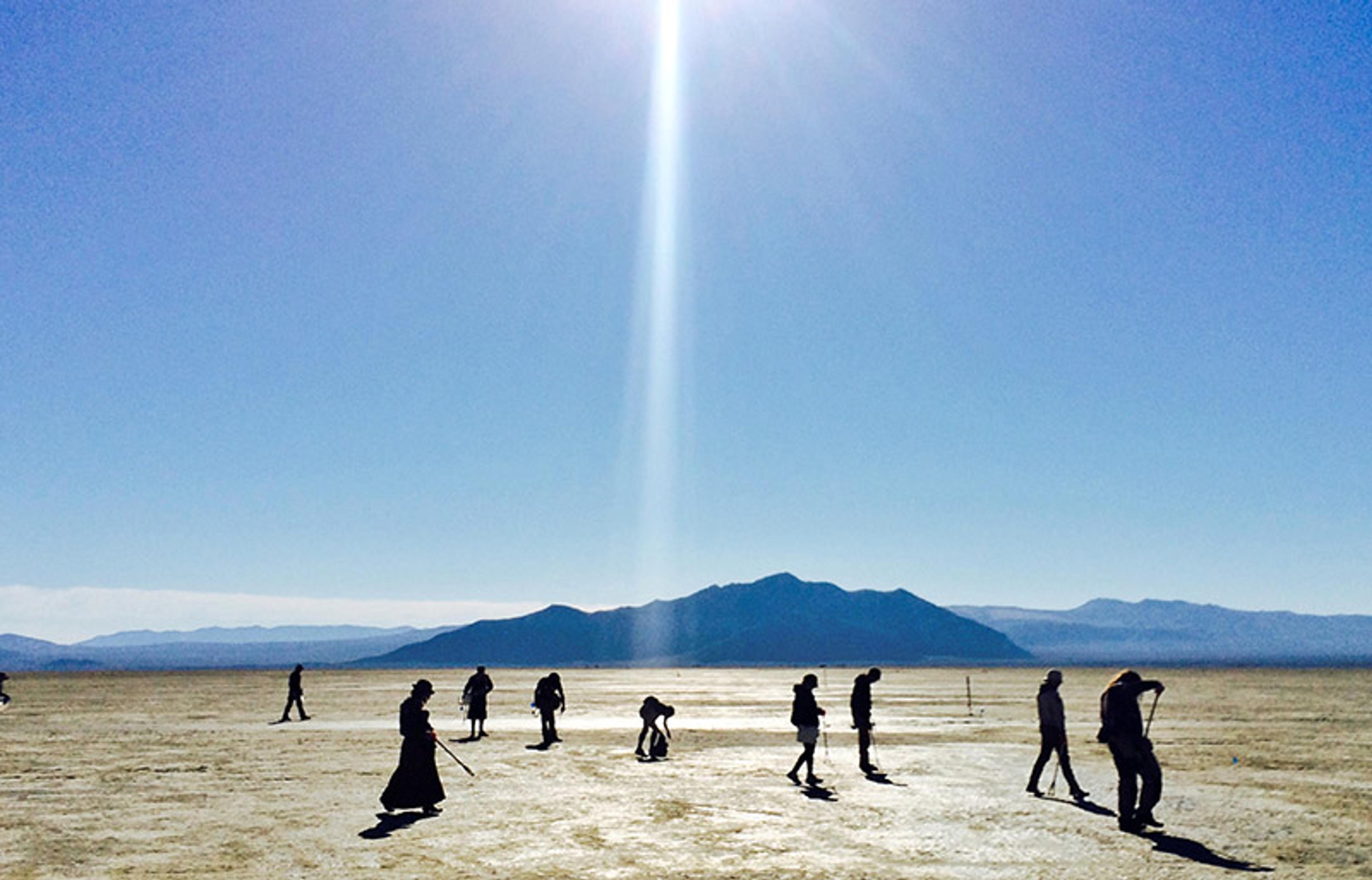
Photo courtesy John Curley.
William Fox, director of the Center for Art + Environment at the Nevada Museum of Art in Reno, sees Black Rock City through the eyes of a geographer. Attendees are inspired, he says, by ‘cognitive dissonance in isotropic spaces’ – spaces with features uniformly distributed in all directions. For a species that has evolved in temperate forests and savannas, where humans ‘developed a sense of scale based on the size and spacing of trees relative to their own size’, writes Fox, the ne plus ultra of deserts distorts hard-wired perceptual expectations. No stranger to Burning Man, in his book Playa Works: The Myth of the Big Empty (2002) Fox observed that, in such spaces, ‘you can feel as if, by being radically diminished in size, you are more properly scaled to the planet. It seems as if your mind expands to fill the space around you, an eerie and very nearly hallucinogenic experience.’ This disorienting experience, Fox adds, is ‘probably related to why so many religions, in particular monotheisms, were birthed in the deserts of the Middle East’.
The cognitive dissonance is so perilous that all participants assume the risk of serious injury or death
Transiting on to the Black Rock Desert is like being transported to another dimension, an experience long described by disoriented travellers through the Nevada emigrant trail. The playa’s eponymous Black Rock, a 400-ft-high promontory of dark sedimentary and volcanic rocks, would become a distinctive landmark for the explorer John C Frémont on his 1843-44 expedition to the desert in search of the mythical San Buenaventura river. Frémont called the country ‘a perfect barren’ and said it was ‘so forbidding, that I was afraid to enter it’.
This kind of spatial estrangement is arguably more dramatic today, when most visitors arrive directly from the bustling urban chaos. Combined with moisture-sapping heat, say the organisers, the cognitive dissonance is so perilous that ticket holders have been traditionally warned that they ‘assume the risk of serious injury or death by attending’.
But such extreme, otherworldy environments as this also foster awe and humility. Attending this event for the first time ‘takes someone to a new mental space’, writes Fox, who sees Burning Man as a ‘cognitive neurophysical event’ that ‘has literally changed the minds of many of its participants’. Among those transformed was the photographer William Binzen, who orchestrated the Desert Siteworks events at hot springs near the playa in the early 1990s. ‘Just walking around with open eyes is sufficient to transport one into an altered something,’ he said. ‘I think of this as “desert trance”. The heat, light, dust, vast space and hive-mind of endless activity and relentless socialising produce altered states naturally.’
Will Chase, who spent a dozen years working in communications for Burning Man, adds that: ‘Something happens to you when you first set foot on the impossibly flat expanse of absofreakinglutely nothing that is the Black Rock Desert – especially when you’re the only ones out there. It’s like your cells … shift. Your bearings go as flat as the horizon line … You’ve never actually stood on a blank slate of truly limitless possibility and had to face what you’re going to do with it.’
Over the course of three decades, the collective hallucination that is Burning Man has become an experiment in augmented impermanence. To accommodate the human flotsam and jetsam washing up on the shores of this desolation each year, Burning Man’s Department of Public Works (DPW) makes Black Rock City from nothing. And, pivotally, it unmakes it as well, for the playa, a National Conservation Area, must be returned to its pre-event status – making Burning Man the largest Leave-No-Trace event in the world. From the moment one sets foot on its surface, everyday life on the playa is a devotion to eliminating what Burners call ‘moop’ (‘matter out of place’). Every carpet fibre, detached sequin, stray woodchip and flake of dried paint, let alone all city infrastructure, every abandoned bike and all humans, must be removed.
After the majority have made ‘exodus’, it becomes the task of the DPW’s Playa Restoration (or Resto) crew to line-sweep the seven-square-mile city in meticulous detail, effectively restoring the sublime. All that should remain in the wake of this mobilisation … is dust. This annual effort permits playanauts to meditate on the permanence of impermanence. Burning Man’s paean to impermanence is the Temple, a structure that, like the Man, has become integral to the playascape. Residents of the temporary city celebrate the burning of the Man on Saturday night, and reduce their cathedral to ashes on Sunday.
It is from dust that we come, and to dust that we shall return: a sobering lesson for me in 2016 when, hunkering with friends amid the charred remnants of the Temple, my hands gently sifted through the warm blackened dust that likely held the remains of countless loved ones. While this sacred detritus is removed from the playa by the Temple crew, the ashes of the departed, deposited by mourners in the Temple in the week before its destruction, are effectively distributed across the playa in plumes of black smoke. The dead merging with the dust.
In the aftermath of Larry Harvey’s death, more than one observer has compared the ephemeral nature of life to Black Rock City. According to Buck AE Down: ‘An entire city – with all its noise and bustle and teeming humanity, its monumental works of art, humans being and humans doing – is only in full flower for a week, and then is quickly and anonymously whisked away, an analogue for life itself. It’s a temporary, albeit noisy blip that gives way to the great nothingness in a relative blink of an eye.’
Has Burning Man lost its transformative potency by diluting the geography of the sublime?
As Burners have returned to the scene of the sublime, the Big Empty has grown familiar and predictable. This is troubling for Fox, who says that the ‘normalisation of space, the repeated motifs of the artworks, and the increasing number of visitors who are more spectators than participants has begun to erode the dissonance, thus the ability of the event to spark unexpected responses’. For detractors, the rule-bound and regulated event now caters to a population of pleasure-seekers whose encounter with the Black Rock playa hardly resembles that naked confrontation with terra incognita of years past. Life on playa enjoyed from the confines of a luxury trailer is so sheltered and domesticated that it repudiates, for some, the rationale for travelling out to the desert to begin with. Instead of an exposure to the other, they lament, the new aesthetic just replicates the modernity from which they had hoped to depart.
Others, meanwhile, have sought to take lessons learned in Black Rock City out into the world. Emissaries trekking what Marian Goodell, the CEO of the Burning Man Project, calls the ‘Grand Playa’ carry jars of vintage playa dust and ashes to locations worldwide, the bouquet quaffed like an exotic spice. Reflecting on this global culture of dust junkies, Fox astutely wonders ‘whether a habit of mind borne of cognitive dissonance on a playa is robust enough to survive the transition’. The question is worth asking: does Burning Man become increasingly dispossessed of its transformative potency the further it migrates from its sublime origins?
All this said, routinely exposing a population of 80,000 to a perfect barren in relatively safe circumstances should be seen as an ingenious experiment. After all, philosophers from Edmund Burke to Arthur Schopenhauer have recognised that qualities in nature can be appreciated as sublime only if they fall just short of absolute threat. This is the circumstance in which this frontier arts community continues to flourish: a remarkably hospitable place in a most inhospitable space.

